Jun 29, 2023
Wimbledon: Match Point for Digital Marketing
July is the month of Wimbledon, the greatest and oldest tennis tournament of them all. Since its launch in 1877, Wimbledon has emerged as one of the world’s most prestigious and loved events with a brand that’s recognized across the globe.
Its success as a global sporting tournament (much like the buzz around the Olympics) is down to the influence and pulling power of its players, its clever and memorable integrated marketing campaigns, exclusive brand partnerships, merchandise (it has Ralph Lauren and Nike collections) the vigilant protection of its brand and its innovative use of digital technologies.
What is the secret to Wimbledon’s success, and how do marketing and the use of technologies (such as a new AI commentary and analysis features) play a role in making it the lauded sporting tournament it is today?
“There's a certain beauty and majesty to Wimbledon. The elegance, the way the grass looks on TV.” John McEnroe
This content is available to Power Members only.
Play to the Crowd - Know Your Audience
The inaugural 1877 Wimbledon featured just 22 male entrants. In 1884 the tournament grew to include men’s doubles and women’s singles. Over the decades it has crowned many tennis champions (bringing fame and lucrative sponsorship deals) and established itself as a global brand - while still being quintessentially English.
Despite the heritage of Wimbledon, complacency can kill a brand stone-dead. Based on this understanding, Wimbledon has evolved to shift its marketing to engage younger (and future life-long) fans on the channels they use.
It is also dedicated to creating rich, digital experiences that excite and inject life into the tournament and sport.
According to Alexandra Willis, Communications & Marketing Director at The All England Lawn Tennis Club (AELTC), which stages Wimbledon, the foundations of its marketing strategy lie in its audience segmentation:
True tennis lovers: People who have a deep passion for the sport and watch Wimbledon for its quality and particular style of tennis. These are the people most likely to watch all Grand Slam championships and line up to get tickets.
Sporting fanatics: Those that like watching elite sports of all varieties and believe that Wimbledon is the finest in its category.
Social fans: People that participate in the Wimbledon dialog as they feel it’s culturally significant, akin to Royal weddings and other notable societal events.
Patriotic types: Those – especially English people - who enjoy Wimbledon as they are proud of the event and enjoy being a part of the tournament in some way.
Two-weekers: People who aren’t tennis fans, but become immersed in Wimbledon, much like those that become soccer fans during the World Cup.
Passive viewers: Those that don’t express a particular interest in the tournament but get caught up in the action as the tournament progresses.
“We recognize that the ‘golden age’ can’t last forever. Our biggest threat is complacency and we’re determined not to be complacent.” James Ralley, Head of Commercial, AETLC
What is Wimbledon’s Marketing Strategy?
Over the decades the tournament has become more sophisticated in its content creation and use of offline and online channels to promote integrated campaigns.
Wimbledon’s online hub is its website which gets between 400,000 and 600,000 views every month (depending on the time of year). The website promotes news, videos, photos and also has an ecommerce capacity to let people buy green and purple branded merchandise.
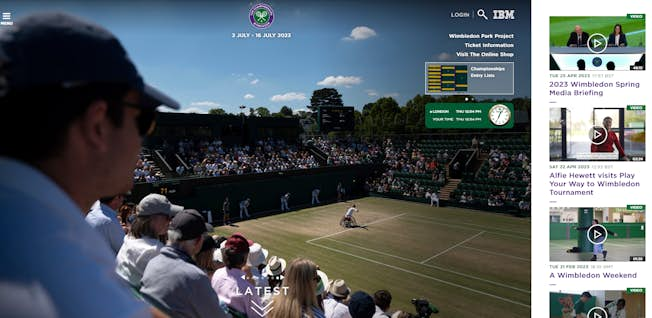
The brand is also active on social media capitalizing on its quality content and celebrity status of the tennis players - many of whom are huge influencers in their own right.
- YouTube - Over 1.5 million subscribers and 5,000 videos. The content features archive content ‘The Best of Wimbledon’, highlights, shorts, interviews, Wimbledon Kids and videos on legendary players such as Serena Williams.
- Facebook - Over 5.5 million followers are treated to historic moments (such as footage of the longest match played), product promotion and archive footage
- Twitter - Nearly 4 million followers engage with video, images and questions such as ‘If there's one match in #Wimbledon history you could have attended, what would it be and why?’ to drive engagement.
- Instagram - Nearly 4 million followers featuring posts and reels
- TikTok - Features amazing shots, interesting facts, or funny outtakes to entertain nearly 2 million followers.
- LinkedIn - Interestingly LinkedIn drives nearly a third of the traffic to the website (the most of all the social channels) according to Similarweb. With nearly 60,000 followers the content shared focuses on the brand such as vacancies, awards and partnerships.
However, there’s much more to Wimbledon than its website and social media activity. Let’s dig into its strategy to see how the tournament continues to evolve as a brand.
Brand Partnerships
Despite being open to innovation and digital experiences, Wimbledon is famously stringent with its brand guidelines as well as its commercial partnerships.
Being somewhat discreet with its advertising has helped the brand to remain prestigious while placing greater focus on its longstanding relationships with the likes of Slazenger (who supplies the tennis balls) and drinks brand Robinsons (this deal ended in 2022), both two prestigious heritage English brands.
Wimbledon currently has exclusive partnerships with:
- Slazenger - Official Ball (1902)
- IBM - Official Information Technology (1990)
- Lanson - Official Champagne (2001)
- Ralph Lauren - Official Outfitter (2006)
- Evian - Official Water (2008)
- Lavazza - Official Coffee (2011)
- Jaguar Land Rover - Official Car (2015)
- Pimm's - Official Partner (2017)
To drive its international appeal, Wimbledon has partnered with a wider roster of international companies like Rolex, Gillette and American Express while broadening its branded content marketing efforts.
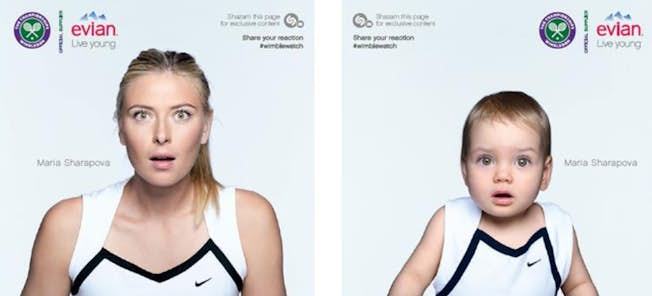
Integrated campaigns
Over the years, Wimbledon has launched many integrated campaigns to mark the start of a new tournament such as ‘In Pursuit of Greatness’ in 2018 and ‘The Stage Awaits’ in 2022.
In 2023, Wimbledon launched ‘Always Like Never Before’ to celebrate iconic moments at the tournament since 1877 and blends archive footage, 2D illustrations, 3D animations, CGI, and photography. The campaign will run across TV, out-of-home, digital and social media in anticipation of the event.
McCann London Creative Directors Matt Searle and Olly Wood said: “The mix of tradition and innovation is at the heart of our ‘Always Like Never Before’ campaign, which recognizes the sport’s trailblazers, great rivals, mavericks and spirited legends who inspire us all and have created so many unforgettable moments at Wimbledon.”
These clever campaigns are a huge undertaking every year but are cemented in showcasing the best of the tournament. The purpose is to drive emotion, inspire and excite people - whether you’re a Wimbledon fan or not!
The Celebrity Factor
There’s a serious star factor to Wimbledon. Not only is it an annual fixture on the British Royal Family’s calendar, but celebrities and stars from all walks of life clamor to attend.
Famous actors like Tom Cruise, Hugh Grant, Kate Winsley and Sienna Miller regularly attend, while sportspeople such as David Beckham, Tom Daley, and Wayne Rooney are also big fans.
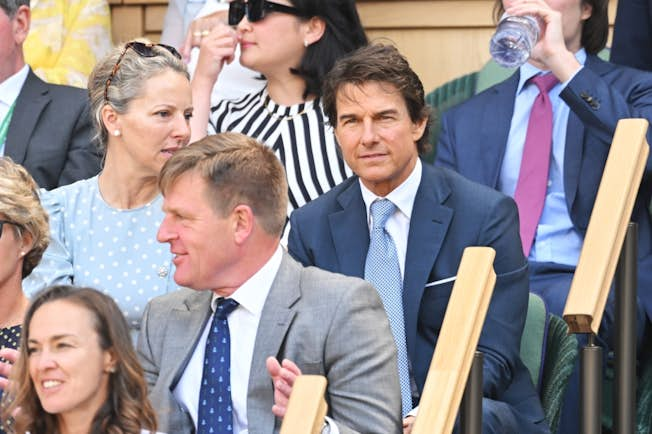
It’s this celebrity status that shines a light on the tournament every year, not only to look at the players' volley but also to see who's in the crowd. Often Wimbledon gets coverage from fashion media as attendees dress up for the occasion in a similar fashion to people at the Met Gala or Oscars.
The Royal stamp of approval also helps drive brand awareness and encourage people to attend or watch. It’s the kind of media attention and brand awareness that many brands can only dream of and with a menial amount of effort from Wimbledon’s side.
Protecting the brand & ambush marketing
Like many iconic brands, Wimbledon makes it a priority to protect its image and brand.
The website states that “One of the key objectives is to enhance the unique character and image of The Championships by keeping the courts and grounds relatively free of commercial sponsorship and product placement. This is the reason for the lack of brashy advertising around the grounds.”
The Championship even trademarked its colors (in the same way the red soles of Louboutin are protected). Since 2016, the combination of dark green and purple associated with Wimbledon and the All England Lawn Tennis Club has been protected as a registered trademark.
The status of Wimbledon means that it is a target for other brands trying to use it as a way to advertise themselves. This is known as ambush marketing and Peperami famously got into trouble for trying to use Wimbledon as a springboard for its product.
The pork jerky snack was given out for free as people queued to get into the event. However, at the gates, people were asked to hand over the snack as it broke the rules. Pringles also ran an ambush campaign many years ago by selling limited edition Pringles tubes in European retailers.

Merchandise & Ecommerce
Wimbledon has an official retail store that also sells Ralph Lauren’s exclusive Wimbledon collection each year.
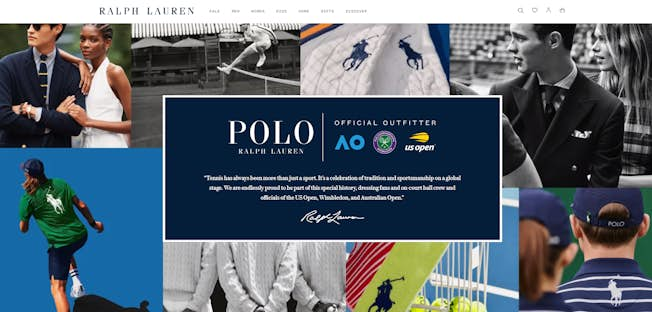
During the 2022 Wimbledon Championships, more than 156,286 retail transactions took place, and over 450,000 products were sold in the Wimbledon Shops and Kiosks including:
- 58,271 baseball caps and Panama hats
- 27,419 towels
- 16,213 logo t-shirts
- 14,760 sweatbands
- 3,201 personalized embroideries on baseball caps and towels that totaled 2.9 million individual stitches
In the same year, the Wimbledon collection that features performance and lifestyle wear saw a 187 percent uplift in sales from the U.S. market compared to the same time last year.
However, the tournament felt it could do more when it came to digital sales.
In 2019 Wimbledon partnered with digital commerce and experience company, Vaimo, to create a digital experience that reflects the history of the brand and gives customers a more immersive experience.
The aim was to have more control over the customer experience and use data to track the performance and behavior of customers. The partnership resulted in a 204 percent year-on-year increase in traffic to wimbeldon.com, a 77 percent increase in transactions and a 113 percent increase in revenue.
Embracing new technology - the era of AI
In its partnership with IBM, Wimbledon continues to evolve to automate digital services and engage with fans. Using artificial intelligence (AI) through IBM’s Watson, the tournament personalizes content on the website and app to attract and engage consumers.
For instance, according to Computer Weekly, the technology can be used to automatically create highlight reels tailored for individual fans.
“These two-minute reels are automatically created by Watson through a combination of stats, listening to the crowd reaction and looking at the gestures of the players,” said Kevin Farrar, IBM UK sports partnership lead. “We then make it available to the Wimbledon digital team.”
AI technology is also used to rank players before the championship. These rankings are based on the form and performance of players in the lead-up to and during the event. It looks at structured data such as results along with unstructured such as media coverage and then uses an algorithm.
There’s also a myWIMBLEDON section on the website that encourages people to register to get personalized highlights based on player choice, tailored content and exclusive benefits.
This has resulted in building audiences through digital platforms. “We have seen steady growth of digital platforms,” says AELTC’s Communications and Marketing Director. “When I started here about 10 years ago, we were getting an audience of about 11 million unique devices. In 2016, we had a record of 21 million unique devices connect, when Andy Murray won. We are on course for a very successful tournament this year.”
The Power of the Tennis Players
Even if you’re not a tennis fan you probably recognize the names Roger Federer, Serena Williams, Naomi Osaka and Novak Djokovic. This is because they are celebrities and stars in their own right.
Like many high-profile sports and tournaments, the earning power of the top players is huge. In 2023, the winner of Wimbledon gets nearly $3 million. Compare that to the winner in 1968 who received just $2,000 for men a female winner only won $750.
However, it’s not only the money from tournaments that makes these players reach multi-millionaire status. Many players earn income from sponsorship deals, endorsements, exhibition fees, and appearance fees.
For example, Roger Federer earned more than $190 million from his many sponsors in the last two years while Naomi Osaka made $60 million in 2021, with over $50 million of that from over twenty sponsors (here’s a tweet announcing her becoming House Ambassador for Louis Vuitton).
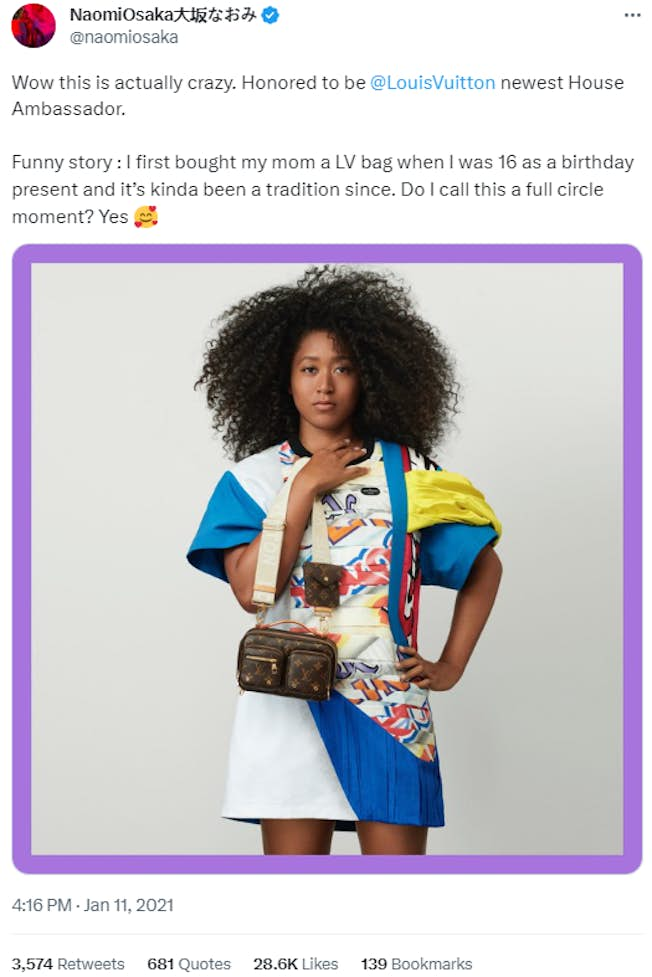
It’s not only the financial status of some tennis players that helps draw attention to the sport and Wimbledon, it’s the celebrity power. Serena Williams is one of the best examples of that as she’s often spotted on red carpets and interviewed in the media. Her friends include Paris Hilton, Kelly Rowland, Meghan Markle and Kim Kardashian. She’s also married to a big hitter in the tech world, Alexis Ohanian, the Co-Founder of social media site Reddit.
Wimbledon knows the power of its players and encourages them to take part in the build-up to the event and BBC interviews. It’s a tactic that keeps people watching and aligns the brand to ‘star power’ before, during, and after the tournament.
“One of the things that we’ve tried to do is embrace and encourage the players to take part in that build-up with us. If you look at social media now – and it started probably a year or so ago – when players are having their first practices on grass, they’re sharing that feeling of excitement and anticipation through their own social media platforms but we’re also encouraging them to embrace our campaign and embrace the build-up to Wimbledon. Because we obviously know that that drives traction as well.” - AELTC Head of Commercial and Brand, James Ralley
Wimbledon: Game. Set. And Match.
While we can’t predict the results of this year’s marketing campaigns, the brand’s unique ability to tell compelling stories and willingness to embrace emerging technologies will preserve the success and reputation of the Wimbledon Brand for decades to come.
By leaning on its heritage and traditional values while communicating with its audience in a way that’s inspiring, experiential and seamless, Wimbledon is a master of international marketing - a brand that we as marketers can all learn from.
Some interesting Wimbledon facts…
- If you were thinking of weaving Wimbledon into next year’s marketing communications, here are some tournament-based facts that might help:
- Wimbledon has announced that its 2022 event was the most attended in the tournament’s 145-year history. The All England Club says 2022 attendance reached 515,164 over the fortnight.
- The title for the most aces in a single Wimbledon tournament belongs to the USA's John Isner (Gentlemen) and Serena Williams (Ladies), who achieved 214 in 2018, and 102 in 2017, respectively.
- Each year, around 250 ball boys and girls from approximately 1,000 entries make it through a rigorous training routine to participate at Wimbledon.
- Around 54,000 tennis balls are used during the Wimbledon tournament. Each yellow ball is inspected and replaced every seven to nine games to keep it in optimum working condition.
- During the tournament, the repairs team strung around 2,000 rackets, using more than 40 miles of string in the process.
Related
Upgrade to Power Membership to continue
your access to thousands of articles, toolkits, podcasts, lessons and much much more.
Become a Power Member- Login
- View Courses
- - - -
- Courses
- Resources
- - - -
- My Account
- Change Password
- Logout






